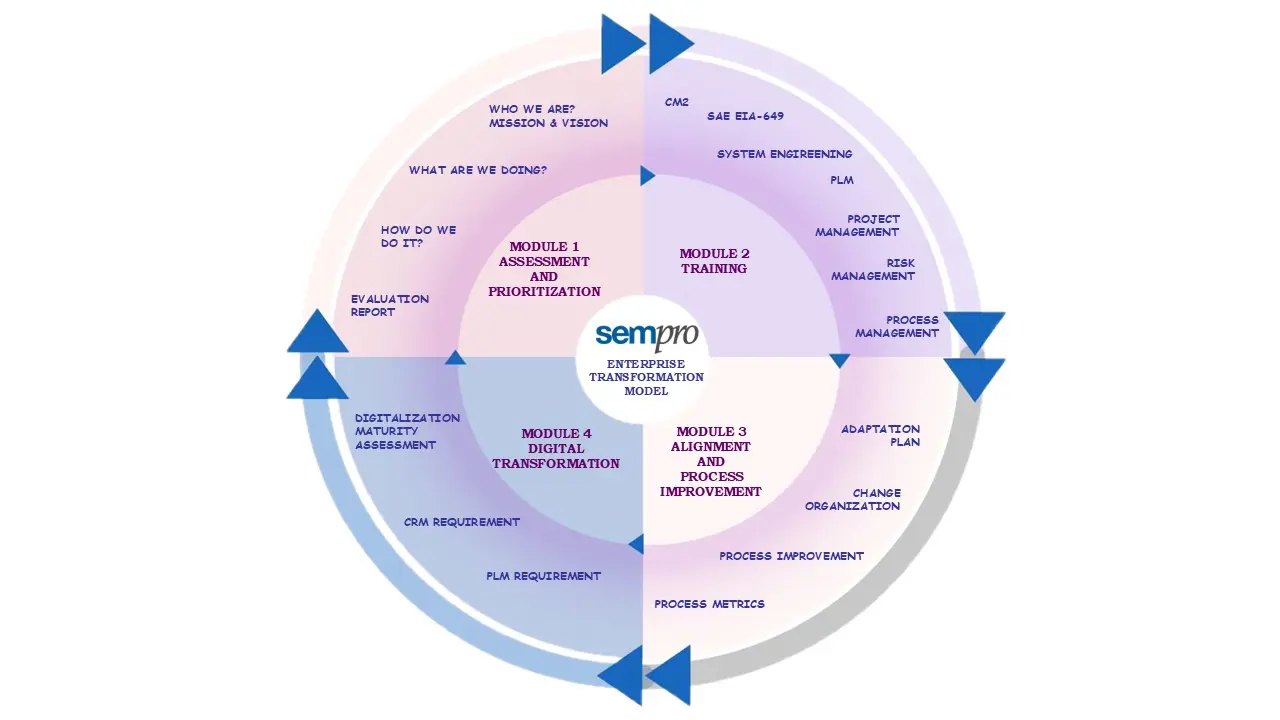In today’s global and competitive world, organizations can survive only by continuously reviewing and renewing their ways of doing business. Every organization operates with certain inputs and produces outputs. The main goal is to increase efficiency and profitability by ensuring that the value derived from outputs exceeds the cost of inputs.
The Enterprise Transformation Model aims to increase the value of outputs, reduce losses, and define the proper structure for digital transformation by ensuring that the inputs of the processes in the company receiving consulting services are properly structured.
The Sempro Enterprise Transformation Model consists of four (4) modules.
Initially, the needs of the company wishing to implement the model are assessed. Based on this assessment, the modules can be implemented individually, entirely, or in pairs depending on the consultancy scope.

Enterprise Transformation Model Modules
For detail information please click on the module name.
Company strategies and objectives are developed.
In order to reach the targets determined in accordance with the developed strategies, the current situation of the company is evaluated and the areas that need to be corrected are identified as a priority.
In order to develop or recreate the defined processes, the 'Enterprise Business Processes Adaptation Plan' is created and the related processes are developed/reformed according to this plan.
Digital tools are defined in order to make the developed processes work flow in digital tools and the processes are adapted to digital tools as workflow.